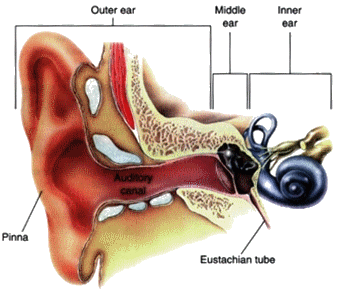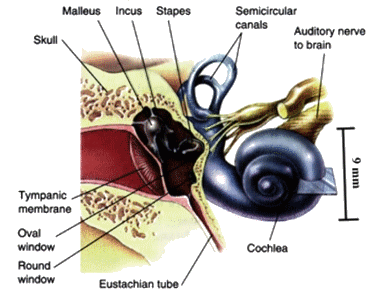| |
Human auditory systemAuditory perception is at least as complicated as visual perception. It is based on several layers of information processing by consecutive parts of a two-channel human auditory system that consists of a pair of outer, middle and inner ears, containing a sophisticated organic machinery terminated by a very delicate cochlea with thousands of hair cells and auditory nerves [1,2,3].  
The impulses sensed by nerves are processed by various parts of the brain that specialized during the evolution into time domain and frequency domain analysis centers allowing for both rapid direction sensing and slower determination of pitch and timbre. The sensitivity of hearing and ability to perceive minor aspects of sounds vary between individuals and strongly depend on age and listening experience. There are many models of the auditory system that represent properties and tolerances of human ear averaged over many listeners developed for the purpose of audio data analysis, enhancement and compression, as well as machine hearing and understanding.
|